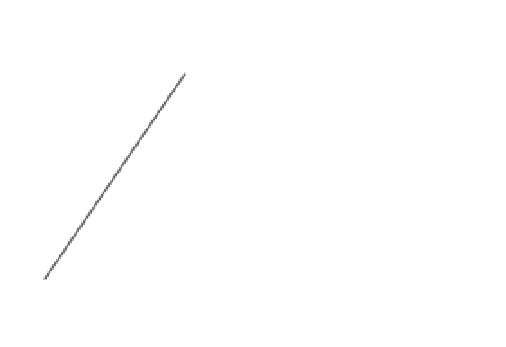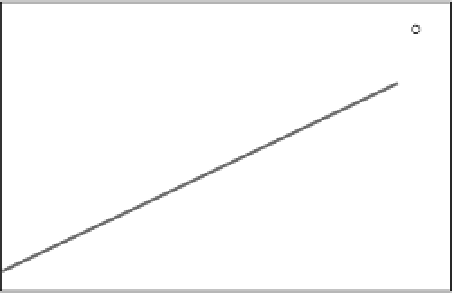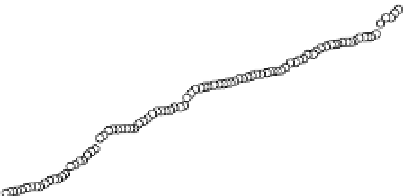Environmental Engineering Reference
In-Depth Information
Advances in ecological theory have pointed to the
interaction strength as a key to the understanding
of realized food webs (e.g. de Ruiter
et al.
1995). Several
model investigations have revealed that natural food-
web structures can indeed enhance ecosystem stability.
Increasing diversity can increase food-web stability
under one condition: the distribution of consumer-
resource interaction strengths must be skewed
towards weak interaction strengths. McCann (2000)
suggested that MacArthur's (1955) hypothesis, that
greater connectance drives community and ecosystem
stability, seems a strong possibility provided that most
pathways are constructed from weak interactions.
Theoretical and empirical findings suggest that
despite the presence of some strong interactions,
weak interactions indeed prevail in communities.
8
6
4
2
0
0
20
40
60
80
100
Species rank
Fig. 4.2
Ranked body mass (body weight, in kg) of
grazing species, heavier than 2 kg, plotted against
species rank number (
Ri
) for the whole of Africa
(
, thick lines; 96 species) and the Serengeti ecosystem
(
, thin lines; 33 species). For each assemblage the
observed patterns (
,
∆
4.3 Trophic interactions
) are given with the linear
regressions (straight lines), as well as the patterns
predicted assuming an equal probability of each body
mass being found (curves). After Prins and Olff (1998).
Reproduced by permission of Blackwell Publishing.
∆
As to the question of how species diversity affects
ecosystem productivity, three postulates have been
brought forward (Fig. 4.3):
in a savanna ecosystem remained quite constant over
a number of years, in spite of relatively large fluctu-
ations in the population densities of the herbivore guild.
Apparently, these fluctuations may compensate for one
another as measured by overall consumption, in spite
of the fact that each herbivore species may play a
specific role (Prins & van der Jeugd 1993). Later on,
Prins and Olff (1998) explained the species richness
of assemblages of African grazers in different eco-
systems by a small number of parameters (Fig. 4.2).
The average body-mass ratio between subsequent
grazing species, if ordered from light to heavy, is always
constant within each assemblage. This weight-ratio
parameter reflects niche differentiation between
grazers, and determines whether competitive dis-
placement or facilitation occurs. The second most
important parameter explaining species richness is the
maximum mass difference between the smallest and
the largest grazer in the system. In areas with high
primary productivity this parameter can have a higher
value than in less-productive areas since large grazers
need more vegetation biomass to cover their intake
requirements. These two parameters together determine
species richness among the herbivores at the present.
1
a positive, non-linear relationship (the redundancy
hypothesis);
2
a positive, linear relationship (the rivet hypothesis);
3
no obvious relationship (the idiosyncratic
hypothesis).
a
b
Number of species
Fig. 4.3
Three potential hypotheses between species
richness and ecosystem productivity as an ecosystem
process: (a) redundant-species hypothesis, (b) rivet
hypothesis, (c) idiosyncracy (not shown). After
Lawton (1997); from van Andel (1998a).
















